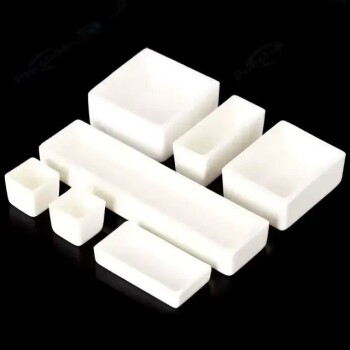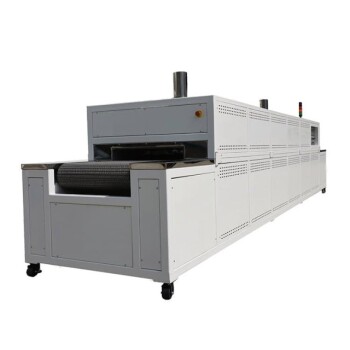머플 퍼니스 개요
유형 및 용도
고온 재로라고도 불리는 머플로는 다양한 산업 분야에서 활용되는 매우 다재다능한 가열 장비입니다. 이러한 퍼니스는 다음 분야에서 필수 불가결합니다. 열처리 에서 필수적이며, 특정 물리적 및 화학적 변형을 달성하기 위해 재료의 가열 및 냉각을 제어할 수 있습니다. 제약 분야에서 제약 부문 머플로는 멸균 및 열분해와 같은 공정에 사용되어 약품의 순도와 효능을 보장합니다.
에서 분석 화학 에서 머플로는 시료 전처리, 특히 추가 분석을 위해 유기 물질을 무기 잔류물로 전환하는 애싱과 같은 기술에서 중요한 역할을 합니다. 용도 석탄 품질 분석 에서는 석탄 시료의 회분 함량과 발열량을 측정하여 에너지 생산 및 환경 평가에 중요한 데이터를 제공하는 데 머플로가 사용됩니다.
금속 소결 공정에서도 머플로는 금속 분말을 기계적 특성이 강화된 고체 형태로 압축하는 데 도움이 됩니다. 마찬가지로 열처리 분야에서는 이러한 용광로를 사용하여 금속의 미세 구조를 변경하여 경도, 강도 및 내마모성을 개선합니다.
다음과 같은 영역에서 세라믹 소성 에서 머플로는 세라믹을 유리화하는 데 필요한 고온을 달성하여 내구성과 미적 품질을 보장하는 데 필수적입니다. 마지막으로 실험 연구 에서도 고온 실험을 안정적으로 수행할 수 있는 수단을 제공하여 다양한 과학 분야의 발전을 지원합니다.
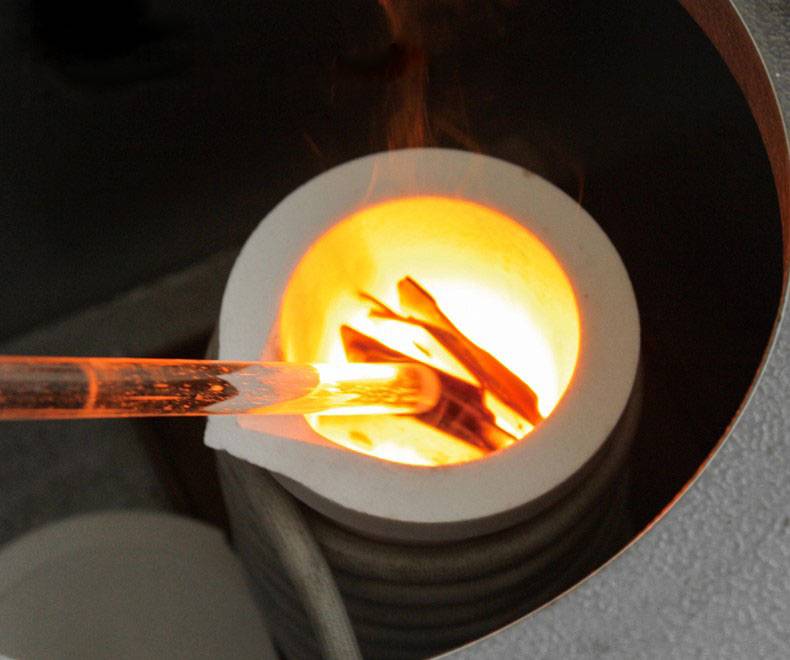
성능 특징
머플로는 다양한 실험실의 요구 사항을 충족하는 다양한 성능 기능을 제공하도록 설계되었습니다. 이러한 퍼니스는 1000°C가 넘는 광범위한 온도 범위에서 작동할 수 있어 세라믹 소성 및 금속 소결과 같은 고온 응용 분야에 적합합니다. 이러한 퍼니스의 가열 속도는 매우 빠르기 때문에 실험 사이클 시간을 크게 단축할 수 있는 신속한 열 공정이 가능합니다.
정밀 온도 제어는 또 다른 중요한 기능으로, 높은 정확도가 요구되는 실험에 필수적인 정확한 온도를 유지할 수 있도록 퍼니스가 정확한 온도를 유지할 수 있도록 합니다. 이러한 수준의 제어는 ±1°C 이상의 정밀도를 제공하는 고급 온도 제어 시스템을 통해 달성되는 경우가 많으므로 분석 화학 및 기타 민감한 응용 분야에 이상적입니다.
머플 퍼니스의 챔버 용량은 맞춤형으로 설정할 수 있으므로 실험실에서 특정 요구 사항에 따라 적절한 크기를 선택할 수 있습니다. 소량의 샘플을 처리하든 대량 배치를 처리하든 챔버 설계의 유연성 덕분에 다양한 실험 설정을 수용할 수 있습니다.
일부 고급 모델에는 에너지 절약형 세라믹 파이버 챔버가 있어 퍼니스의 효율을 향상시킬 뿐만 아니라 내구성에도 기여합니다. 이러한 챔버는 열을 보다 효과적으로 유지하도록 설계되어 에너지 소비를 줄이고 퍼니스의 수명을 연장합니다. 이러한 에너지 효율과 내구성의 조합으로 인해 세라믹 파이버 챔버는 많은 실험실에서 선호되는 선택입니다.
주요 특징
머플로는 다양한 실험실 및 산업 응용 분야에 적합한 몇 가지 주요 특성으로 구별됩니다. 이러한 특징은 퍼니스의 기능을 향상시킬 뿐만 아니라 작동의 안전성과 효율성을 보장합니다.
눈에 띄는 특징 중 하나는 분할 설계 본체 를 분리하여 유지보수 및 수리가 용이하다는 점입니다. 이 설계는 일반적으로 가열 챔버와 제어판을 분리하여 전기 위험의 위험을 줄이고 발열체와 같은 구성 요소를 더 쉽게 교체할 수 있도록 합니다.
지능형 컨트롤러 는 고급 자동화와 정밀도를 제공하는 또 다른 중요한 구성 요소입니다. 이러한 컨트롤러는 복잡한 가열 주기를 관리하도록 프로그래밍하여 퍼니스가 원하는 온도 범위와 시간 내에서 작동하도록 보장할 수 있습니다. 사용자 친화적인 인터페이스와 함께 제공되는 경우가 많으므로 초보자도 쉽게 퍼니스를 설정하고 모니터링할 수 있습니다.
내구성이 뛰어난 내구성 있는 발열체 는 오랜 기간 동안 일관된 성능을 유지하는 데 필수적입니다. 탄화규소나 이규화몰리브덴과 같은 고품질 소재로 제작된 이러한 발열체는 성능 저하 없이 고온을 견딜 수 있어 안정적인 가열과 용광로 수명 연장을 보장합니다.
고급 온도 제어 시스템 내부 온도를 정밀하게 조절할 수 있습니다. 이는 분석 화학이나 재료 과학과 같이 정확한 온도 조건이 필요한 실험에 매우 중요합니다. 많은 최신 퍼니스는 ±1°C 이내의 온도 균일성을 제공하며, 이는 일관된 결과를 얻기 위해 필수적인 요소입니다.
실험실 환경에서는 안전이 가장 중요하며, 머플 퍼니스에는 여러 가지 안전 기능 . 여기에는 자동 차단 메커니즘, 과열 경보 및 비상 정지 버튼이 포함될 수 있으므로 감독하지 않는 조건에서도 용광로를 안전하게 작동 할 수 있습니다.
마지막으로, 다음과 같은 기능 퍼니스 챔버 커스터마이징 을 통해 다양한 유형과 크기의 샘플을 유연하게 처리할 수 있습니다. 일상적인 분석을 위해 작은 챔버가 필요하든 대량 처리를 위해 더 큰 챔버가 필요하든, 맞춤형 옵션을 통해 특정 요구 사항을 충족하도록 퍼니스를 조정할 수 있습니다.
요약하면, 이러한 특성의 조합으로 인해 머플로는 다양한 실험실 응용 분야에서 다목적이며 신뢰할 수 있는 선택이 될 수 있습니다.
적합한 머플 퍼니스 선택하기
온도 요구 사항
머플로를 선택할 때는 특정 실험에 필요한 온도 범위를 고려하는 것이 중요합니다. 공정마다 다양한 극한 온도가 요구되며, 올바른 장비를 선택하려면 이러한 요구 사항을 이해하는 것이 필수적입니다.
예를 들어, 재료 건조에는 일반적으로 500~600°C의 적당한 온도가 필요합니다. 이 온도 범위에서는 열 성능 저하 없이 재료를 효율적으로 건조할 수 있습니다. 반면 세라믹 소성 공정에서는 최대 1700°C에 이르는 훨씬 더 높은 온도가 필요한 경우가 많습니다. 이러한 높은 온도는 세라믹에서 원하는 구조적 및 물리적 특성을 얻기 위해 필요합니다.
| 공정 유형 | 온도 범위 | 온도 제어의 중요성 |
|---|---|---|
| 재료 건조 | 500-600°C | 열 저하 없이 효율적인 건조 보장 |
| 세라믹 소성 | 최대 1700°C | 원하는 구조적 및 물리적 특성 달성 |
이러한 온도 요구 사항을 이해하면 실험의 열 요구 사항을 정확하게 충족하여 최적의 결과와 공정 효율성을 보장할 수 있는 머플로를 선택하는 데 도움이 됩니다.
퍼니스 챔버 크기
머플로를 선택할 때 챔버의 크기는 실험 효율과 결과에 직접적인 영향을 미치는 중요한 고려 사항입니다. 챔버 크기는 처리하려는 샘플의 크기와 수에 비례해야 합니다. 시료가 크거나 시료의 양이 많을수록 균일한 가열 및 처리에 필요한 공간을 수용하기 위해 더 큰 용광로 챔버가 필요합니다.
적절한 챔버 크기를 결정하려면 먼저 일반적인 샘플의 치수를 평가하는 것부터 시작하세요. 이 샘플이 표준 샘플인지 아니면 비정상적으로 큰 샘플인지 고려하세요. 예를 들어, 큰 세라믹 조각이나 여러 샘플을 동시에 자주 작업하는 경우 더 큰 챔버가 필수적입니다. 반대로 더 작은 챔버는 공간과 에너지 효율을 최적화하는 소형 또는 개별 시료에 적합합니다.
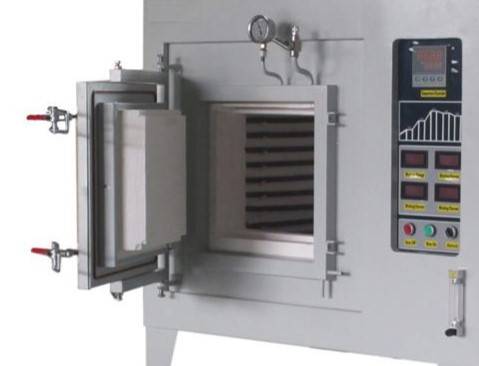
고려해야 할 또 다른 요소는 정기적으로 처리하는 샘플의 양입니다. 처리량이 많을수록 잦은 재장전을 피하고 지속적인 작동을 유지하기 위해 더 큰 챔버가 필요할 수 있습니다. 이는 제약 또는 분석 화학 실험실과 같이 배치 처리가 일반적인 산업에서 특히 중요합니다.
요약하면, 퍼니스 챔버 크기는 실험실의 특정 요구 사항에 따라 선택해야 합니다. 시료의 크기와 부피를 신중하게 평가하여 실험에서 최적의 성능과 효율성을 보장하는 챔버가 있는 머플로를 선택할 수 있습니다.
온도 균일성
정밀한 실험을 위해서는 온도 균일성이 높은 퍼니스를 선택하는 것이 중요합니다. 이러한 균일성은 일반적으로 고온 영역의 온도 변화로 측정되며, 종종 범위(예: ±20°F)로 표시됩니다. 예를 들어 AMS 2750D, 클래스 4를 준수하는 용광로는 300-600°F 범위 내에서 ±20°F의 온도 균일성을 제공합니다. 이 수준의 정밀도는 퍼니스 챔버 내의 모든 시료가 일관된 가열을 경험하도록 보장하며, 이는 재현 가능한 결과를 얻기 위해 필수적입니다.
그러나 모든 응용 분야에 이처럼 엄격한 균일성이 필요한 것은 아닙니다. 예를 들어 일반적인 재료 건조에는 동일한 수준의 정밀도가 요구되지 않을 수 있습니다. 이러한 경우에는 더 넓은 온도 균일성 사양을 갖춘 퍼니스로 충분할 수 있으며, 공정의 전반적인 효율성을 저하시키지 않으면서 비용을 절감할 수 있습니다.
퍼니스의 온도 균일성은 단열재와 발열체 배열을 포함한 핫존의 설계에 크게 영향을 받습니다. 특히 가스 배출 포트와 같은 중요한 지점에서 틈과 개구부를 최소화하는 세심한 설계를 통해 최적의 균일성을 달성할 수 있습니다. 또한 다중 구역 난방 시스템은 전력 입력을 동적으로 조정하여 챔버 전체에 보다 균일한 온도 분포를 보장할 수 있습니다.
| 온도 범위 | 균일성(±°F) | AMS 2750D 클래스 |
|---|---|---|
| 300-600°F | 20 | 클래스 4 |
| 600-900°F | 15 | 클래스 3 |
| 900-2500°F | 10 | 클래스 2 |
이러한 사양을 이해하면 특정 실험실 요구 사항에 적합한 용광로를 선택하여 정밀도와 실용성의 균형을 맞출 수 있습니다.
온도 상승 속도
실험실에 필요한 머플 퍼니스를 선택할 때, 특히 빠른 열 순환이 필요한 공정의 경우 온도 상승 속도를 고려해야 할 중요한 요소입니다. 온도 상승 속도가 빠른 퍼니스는 원하는 작동 온도에 도달하는 데 필요한 시간을 크게 단축하여 실험 일정을 단축하고 전반적인 효율성을 개선할 수 있습니다.
급속 소결이나 급속 열처리와 같은 응용 분야의 경우 단시간에 높은 온도 구배를 달성할 수 있는 퍼니스가 필수적입니다. 이러한 급속 열 공정에는 주변 온도에서 작동 온도로 빠르게 전환하여 필요한 시간 내에 재료 특성을 변경할 수 있는 장비가 필요합니다.
하지만 모든 실험실 공정이 빠른 온도 상승 속도를 필요로 하는 것은 아닙니다. 예를 들어, 일상적인 소결은 일정한 온도에서 장시간 가열하는 경우가 많으므로 이 기능이 필요하지 않을 수 있습니다. 이러한 경우에는 온도 상승 속도가 더 적당한 퍼니스가 성능과 비용 효율성의 균형을 맞추는 데 충분할 수 있습니다.
| 프로세스 유형 | 온도 상승률 요구 사항 |
|---|---|
| 빠른 열 프로세스 | 높음(빠른 온도 상승) |
| 일상적인 소결 | 보통(꾸준한 온도 상승) |
요약하면, 빠른 온도 상승 속도는 특정 실험실 애플리케이션의 판도를 바꿀 수 있지만 보편적으로 필수적인 것은 아닙니다. 특정 실험 요구 사항을 신중하게 고려하면 속도와 비용 간의 최적의 균형을 결정하는 데 도움이 됩니다.
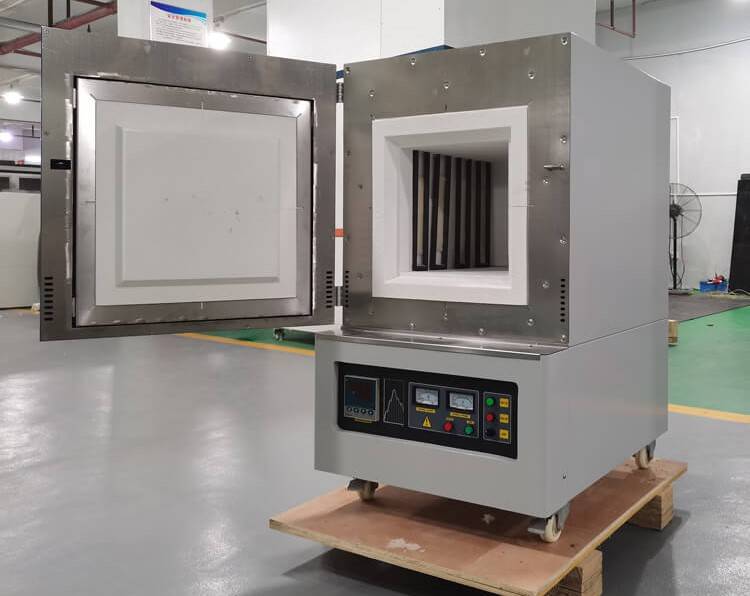
제어 정밀도
정확한 온도 제어가 필요한 실험의 경우 일반적으로 ±1°C 이상의 고정밀도를 갖춘 퍼니스를 선택하는 것이 필수적입니다. 이 수준의 정확도는 열 조건이 원하는 파라미터 내에서 일관되게 유지되도록 보장하며, 이는 민감한 물질이나 정밀한 화학 반응과 관련된 실험에 매우 중요합니다.
| 정밀도 수준 | 일반적인 응용 분야 |
|---|---|
| ±1°C 이상 | 정확한 온도 제어가 필요한 분석 화학, 제약 연구 및 실험 연구. |
| ±5°C 이상 | 일반 가열 처리, 재료 건조 및 일상적인 소결 공정. |
반면, 재료 건조 또는 일상적인 소결 공정과 같은 일반적인 가열 처리에는 이러한 엄격한 정밀도가 필요하지 않을 수 있습니다. 이러한 공정은 종종 더 넓은 범위의 온도 변동성을 허용하므로 정밀도가 떨어지는 용광로도 충분합니다. 따라서 퍼니스의 선택은 효율성과 정확성을 모두 보장하기 위해 실험의 특정 요구사항에 맞춰야 합니다.
퍼니스 재료
머플 퍼니스를 선택할 때 퍼니스의 재질은 퍼니스의 성능과 수명에 직접적인 영향을 미치는 중요한 요소입니다. 난로에 사용되는 두 가지 주요 재료는 세라믹 섬유와 내화 벽돌로, 각 재료는 용도에 따라 뚜렷한 장점을 제공합니다.
세라믹 섬유 난로는 빠른 난방 기능과 에너지 효율로 유명합니다. 이 난로는 가볍고 단열성이 뛰어난 소재로 구성되어 있어 온도 변화가 빠르기 때문에 자주 또는 빠른 가열 주기가 필요한 공정에 이상적입니다. 에너지 효율적인 설계로 운영 비용을 절감할 수 있어 에너지 소비가 주요 관심사인 실험실에 특히 유용합니다.
반면 내화 벽돌 난로는 극한의 온도를 견딜 수 있도록 제작되어 고온 용도에 더 내구성이 뛰어납니다. 이러한 난로는 고온에 장시간 노출되어도 성능 저하 없이 견딜 수 있는 재료로 제작되어 세라믹 소성이나 금속 소결과 같이 지속적인 고온 처리가 필요한 작업에 적합합니다. 세라믹 섬유 난로에 비해 가열하는 데 시간이 오래 걸릴 수 있지만, 내구성이 뛰어나 까다로운 조건에서도 수명이 길고 일관된 성능을 보장합니다.
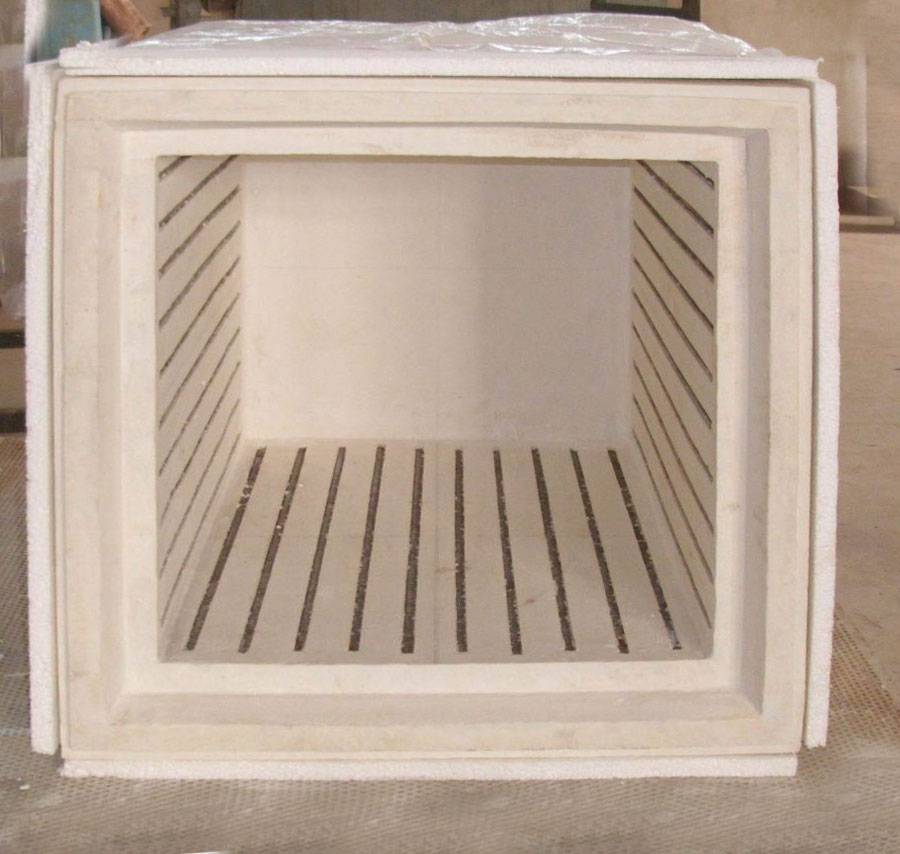
이러한 재료 중에서 선택하는 것은 실험실 프로세스의 특정 요구 사항에 따라 달라집니다. 빠른 가열과 에너지 효율이 필요한 실험의 경우 세라믹 파이버 하스가 선호됩니다. 그러나 지속적인 고온 작동이 필요한 응용 분야에서는 내화 벽돌 난로가 필요한 견고성과 신뢰성을 제공합니다.
추가 기능
머플로를 선택할 때는 실험의 기능과 효율성을 향상시킬 수 있는 기능을 고려하는 것이 중요합니다. 프로그래밍 가능한 제어 은 정밀한 다단계 열처리가 필요한 실험에 특히 유용합니다. 이러한 제어 기능을 사용하면 가열 프로필을 사용자 지정할 수 있어 프로세스의 각 단계가 정확하고 일관되게 실행되도록 보장할 수 있습니다.
자동 알람 은 또 다른 필수 기능으로 특정 온도 도달, 전력 변동, 시스템 오작동과 같은 중요한 이벤트에 대한 실시간 알림을 제공합니다. 이를 통해 문제를 즉시 해결하여 실험 오류나 장비 손상의 위험을 최소화할 수 있습니다.
다음과 관련된 실험의 경우 민감한 물질 또는 시간이 중요한 프로세스 다음과 같은 기능 원격 모니터링 및 데이터 로깅 와 같은 기능은 매우 유용할 수 있습니다. 이러한 기능을 사용하면 시간 경과에 따른 온도 데이터를 추적하고 기록하여 퍼니스의 성능과 실험 결과에 대한 귀중한 인사이트를 얻을 수 있습니다.
또한 다음과 같은 기능을 갖춘 퍼니스도 고려하세요. 에너지 절약 기술 를 갖춘 퍼니스도 고려해 보세요. 세라믹 섬유 챔버 과 같은 에너지 절약 기술이 탑재된 용광로를 고려해보세요. 이 용광로는 기존의 내화 벽돌 용광로에 비해 가열 시간이 빠르고 에너지 소비가 적습니다. 이러한 기능은 운영 비용을 절감할 뿐만 아니라 보다 지속 가능한 실험실 환경에도 기여합니다.
이러한 추가 기능을 신중하게 평가하여 실험 요구 사항을 충족할 뿐만 아니라 실험실 작업의 전반적인 효율성과 효과를 향상시키는 머플 퍼니스를 선택할 수 있습니다.
관련 제품
- 실험실용 1200℃ 머플로 퍼니스 오븐
- 1700℃ 실험실용 머플로 퍼니스
- 실험실용 1400℃ 머플 오븐 퍼니스
- 실험실용 1800℃ 머플로 퍼니스
- 실험실 머플로용 고급 정밀 알루미나 Al2O3 세라믹 도가니





